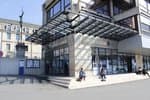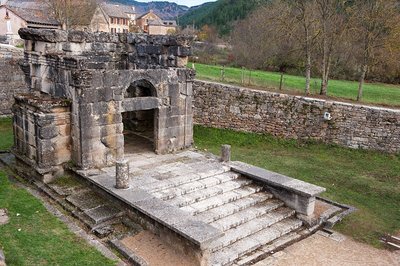
Lanuéjols
The mausoleum takes you back to the Gallo-Roman period; the châteaux on their seigneurial land to the Middle Ages. On the Causse de Mende, Chapieu farm relives the era of large Causse farms, whilst in the valley the hamlets reflect today's agriculture. Human work has left its marks everywhere.
6 points of interest

Le mauzolée - © Nathalie Thomas  Architecture
ArchitectureLanuéjols mausoleum
"It was built in the third century by a well-off couple in memory of their two sons. The couple might have run both an agricultural estate and the region's mines. Tombs of such opulence are rare, and in France only one other example is known, at St-Rémy-de-Provence. Its half-buried position is due to the accumulation of matter brought by runoff (the monument was cleared several times in the 19th century). The main room probably housed the sarcophagi and statues of the deceased. The building is constructed from large carved blocks of limestone laid very evenly, and its entrance is topped by an archivolt (ornamental side of a stone arch) decorated with scrollwork (coiled plant motifs) and a lintel.” (A. Boemare)
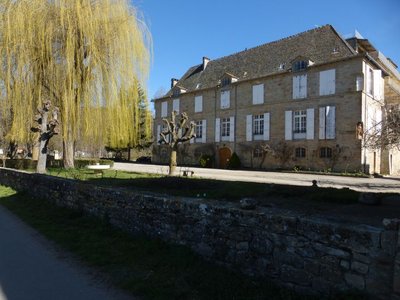
Château de Boy - © Nathalie Thomas  History
HistoryChâteau du Boy
"Le Boy, an agricultural estate in the Early Middle Ages, became the residence of the Seigneurs du Tournel in the early 14th century. These being particularly troubled times (the Hundred Years' War), the property was fortified. A round corner tower remains from this period. This first castle, destroyed during the religious wars, was rebuilt in the 18th century and embellished with a Renaissance courtyard with two galleries accessed by spiral staircases. In the 18th century, the main facade was reworked with the addition of large windows overlooking a French formal garden.” (A. Boemare)
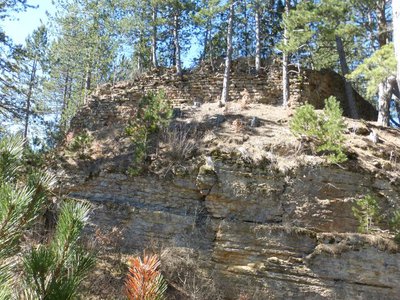
Château de Chapieu - © Nathalie Thomas  History
HistoryChâteau de Chapieu
"This château is the oldest in the Tournel barony. The Chapieu site is a diverticulum of the Causse de Mende, with steep slopes on three sides. To defend it, one simply had to bar the passage linking it to the plateau. It is likely that an oppidum preceded the castle from the Iron Age onwards. (…) Was it finally razed to the ground on Richelieu's orders, like so many others? In any case, it is nothing but ruins from the 17th century on.” (A. Boemare)

Ancienne ferme fortifiée de Chapieu - © Guy Grégoire  Architecture
ArchitectureChapieu farm
"These buildings, which were the headquarters of a very large Causse farm, are laid out around a central courtyard. The main building faces south and consists of two floors of living quarters above a sheepfold. Two barns under vaulted granges that are 22 m long form the wings.” (A. Boemare)
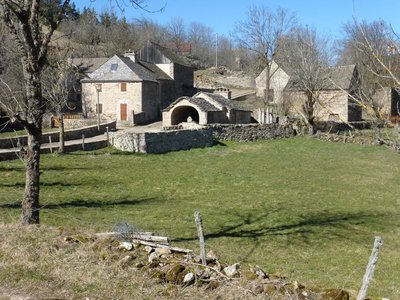
Village de Masseguin - © Nathalie Thomas  Architecture
ArchitectureLe Masseguin
“This hamlet contains a few handsome examples of traditional architecture and an unusual joint fountain-bread oven. The back wall of the fountain was added later, and the layout of the buildings shows that the ruined oven, which is behind the fountain, was originally covered by the same roof.” (A. Boemare)
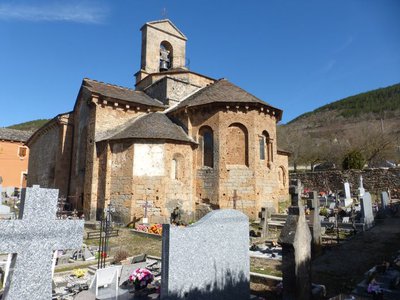
Église de St-Pierre - © Nathalie Thomas  Architecture
ArchitectureSt-Pierre Church
"St-Pierre Romanesque church was built in the 12th century and expanded in the 14th. Built from tuff and limestone from the region, it has remained very pure in style. The nave has a barrel vault; two chapels added in the 14th century make up the side aisle. They house the funerary niches of the Auriac, Châteauneuf and Tournel families. The transept, which is topped by a dome on squinches, supported an octagonal bell tower before the French Revolution. The five-sided apse and the apse chapels are covered by spherical vaults: from the outside, they form a beautifully arranged chevet.” (A. Boemare)
Description
Signposts will guide you all along this route, as well as yellow painted waymarks. In the description below, the signposted place names and/or directions are given in bold italics between quotation marks :
Starting at « Lanuéjols », walk to « Chapieu » by :
- « Église»,
- « Finiols »,
- « Condamine »,
- « Chapieu ». At « Chapieu » go to :
- « La Valette », then:
- « Plo de la Coste »,
- « Ron des Classes »,
- « Col de la Loubière ».
At « Col de la Loubière », return to « Lanuéjols » by: - « Sous le col de la Loubière »,
- « Le Masseguin »,
- « Combe Sourde », by the chapel of St-Geniès, then:
- « Vitrolles »,
- « La Coste » and « Église ».
This hike is taken from the guidebook Mont Lozère – Pays des sources, de la montagne du Goulet aux gorges du Bramont, published by the Pôle de pleine nature du Mont Lozère.
- Departure : Lanuéjols
- Arrival : Lanuéjols
- Towns crossed : Lanuéjols, Badaroux, Sainte-Hélène, and Chadenet
Forecast
Altimetric profile
Recommandations
Make sure your equipment is appropriate for the day's weather conditions. Remember that the weather changes quickly in the mountains. Take enough water, wear solid shoes and put on a hat. Please close all gates and barriers after yourself.
Information desks
Tourism office Coeur de Lozère, Mende
BP 83, place du Foirail, 48000 Mende
This office is part of the National Park's associated tourist-information network, whose mission is to provide information on, and raise awareness of, the sites and events as well as the rules that must be observed in the National Park's central zone.
Open year-round
Access and parking
From Mende, head towards Balsièges (N 88), then take the N 106 towards the Col de Montmirat (from Florac, take the N 106 towards Mende/Col de Montmirat). At Rouffiac, take the D 41 towards Langlade/Lanuéjols
Parking :
Calculateur d'itinéraire Lio
Utilisez le calculateur liO pour organiser votre trajet en région Occitanie.
Autres régions
Calculez votre itinéraire en Auvergne Rhône Alpes sur Oùra
Biodiversité autour de l'itinéraire
Source


Report a problem or an error
If you have found an error on this page or if you have noticed any problems during your hike, please report them to us here:

